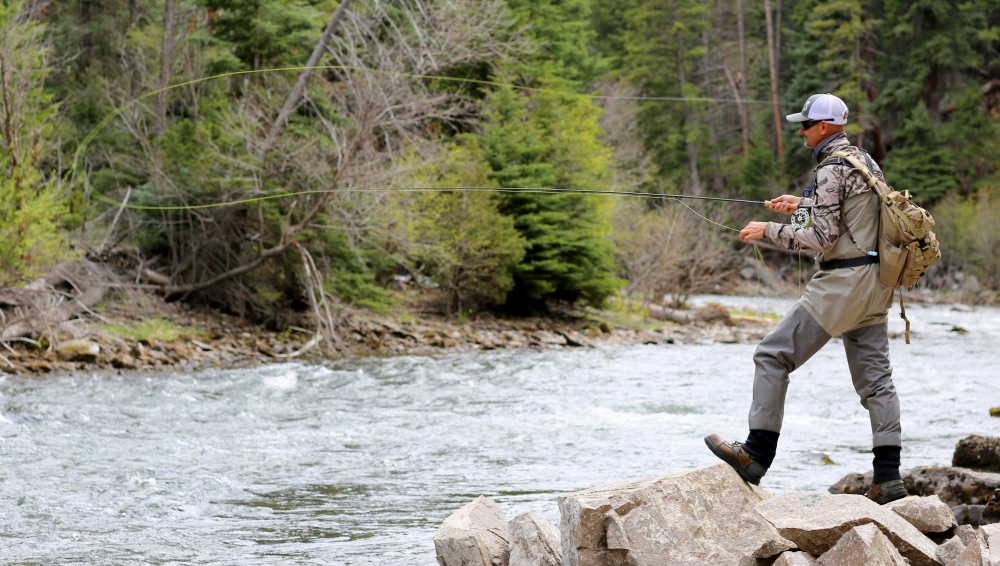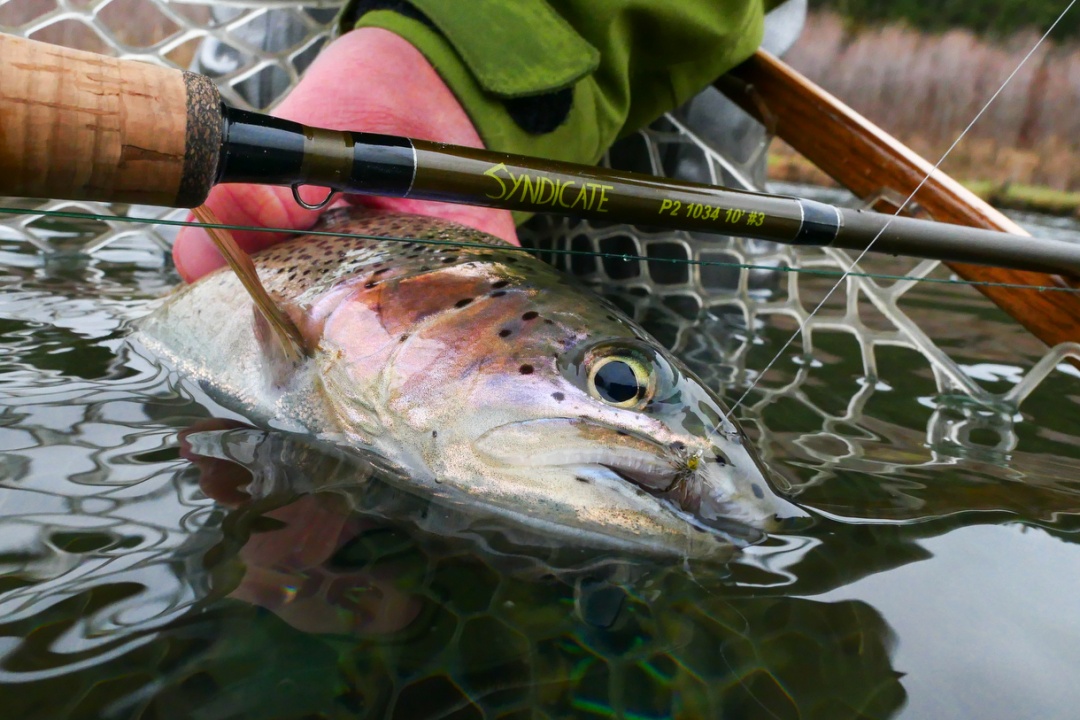What is Dry Fly Fishing?
Fishing with a dry fly is a form of fly fishing in which the angler will present a floating fly to the fish instead of one that sinks. The fly will usually imitate the adult form of an aquatic insect, but can also imitate terrestrials, such as grasshoppers and ants.

It is said that only 10 percent of a trout’s diet is consumed on the surface, which is why fishing a dry fly is seen as such a great opportunity. On top of that, it is also just plain exciting to watch a fish slurp a fly from the surface of the water. While it may seem that fish eat dry flies with reckless abandon at times, matching the hatch is the key to dry fly fishing so it is important to be prepared with the ideal leader, tippet, and floatants, for the situation.

What kind of leader is best for dry fly fishing?
There are many leaders available to the fly angler and the right one really can impact the angler’s ability to fish effectively. When fishing smaller dry flies, such as midges, caddis, and most mayflies, it is ideal to have a longer, supple, leader with a long taper to provide delicate presentations. For example, when fishing a spring Blue Wing Olive hatch, using a longer (9 feet+) leader with a drawn-out taper will help in laying those small dry flies out softly. Look for leaders that are advertised as spring creek, finesse or some trout tapers and be sure that the taper extends through the majority of the leader.
The opposite is effective for fishing larger stonefly or terrestrial grasshopper fly patterns that have more wind resistance. To turn over these larger dry flies effectively, it is best to use a shorter (7.5ft) leader that has a longer butt section and a shorter taper. The longer, thicker butt section of this leader will aid in turning over larger flies quicker. Look for leaders advertised as power, big fly, or hopper tapers.
As with all things fly fishing, there will be some variance to leader lengths in different situations. For example, when fishing a small creek with smaller dry flies, it is ideal to have a shorter leader that will turn over quicker for short casts. It is a good idea to explore different leaders and how they perform in one’s own fishing adventures and don’t rule out building a custom leader as well.
Is it necessary to add tippet to the dry fly leader?
When fishing dry flies, it is common to change flies often to find the correct imitation of the insect on the menu. For this reason, it is best to add tippet to the leader in order to not cut back into the taper of the leader when changing flies. Only about 12-14 inches of tippet is necessary as any more will inhibit the function of the tapered leader. For the best presentation, it is best to add tippet of the same formulation as the leader, such as monofilament and fluorocarbon.
Is monofilament or fluorocarbon better for dry fly fishing?
Because fluorocarbon leaders and tippets are denser and tend to sink faster than those made from monofilament, it is generally better to use monofilament materials when fishing dry flies. This is especially important when fishing small dry flies that are less inclined to float. Choosing a supple monofilament will be the best choice in most dry fly fishing situations.

How to help your dry flies float better
While most dry flies are constructed of buoyant materials, it is still necessary to promote their buoyancy with a silicone fly dressing, an amadou fly drier, and a powdered desiccant.
To enhance the floatation, the fly needs to be waterproof. This is why a good silicone gel or liquid is important. After tying the dry fly on and before casting it upon the water, apply a small amount of silicone gel or liquid and let it dry briefly. By doing so, the fly will absorb less water and float longer. Remember to only apply the silicone to a fly when it is dry or it will trap the moisture inside the fly!
After so much time on the water, or after being eaten by a fish, the fly will begin to sink as it becomes water logged. The best practice here is to first soak the moisture out of the fly with a fly drying patch, such as an amadou patch. The amadou patch is like a sponge and will absorb the moisture from the fly much better than merely blowing on it or false casting.
After drying the fly with an amadou patch, a desiccant powder should be added to the fly to promote the floatation of the fly as it is casted back upon the water. The desiccant floatant is a fine option without the amadou patch, but both products in unison work far better. If using the desiccant without the amadou, be sure to dry the fly as much as possible before applying the desiccant. For large foam flies, a dry shake is a good option, but when fishing small flies, it may be best to apply the desiccant with a brush. Both options are widely available.
Repeating steps two and three as the fly begins to sink will enhance the presentation of the dry. Don’t get lazy!
Is it possible to fish more than one dry fly at a time?
Fishing one dry fly at a time can produce so much excitement, why not double it? Tie an extra dry fly on to make them “dance” when fishing caddis, drakes, or similar flies that tend to bounce along the surface of the water.
To add an additional fly, tie an extra piece of tippet to the bend of the hook of the first fly, then to the eye of the second fly. It is usually best to make the distance between the flies fairly large, about 18-24 inches is a good rule of thumb. By giving this much distance between the flies, it will allow them to move more freely form one another and drift more realistically.

Another option in setting up a double dry fly rig is to tie the additional fly on to a tag. By doing so, the flies have extra ability to move independently of each other so they look more realistic on the water. This can also allow the angler to bounce the first fly, the tag fly, along the surface while the second fly drifts along with the current.

How to effectively fish the hatch with a dry fly
Fish tend to have a feeding rhythm when it comes to eating bugs on the surface during a consistent hatch. More often than not, an angler can count the seconds between rises of a specific fish, then plan the presentation to be in that particular fish’s feeding window. This is called “timing the rise.”
It is always possible to catch fish by randomly casting a dry fly out on the water, but to be most efficient with a dry fly, an angler should take an extra moment to observe. In doing so, one can form a strategy in catching fish without spooking others in the process. This will also give the angler the ability to time the rises of certain fish and be more prepared with the correct fly. Don’t jump in and cast before observing the situation to be sure the rigging is correct, the fly is prepared, and the target fish has been picked out.
